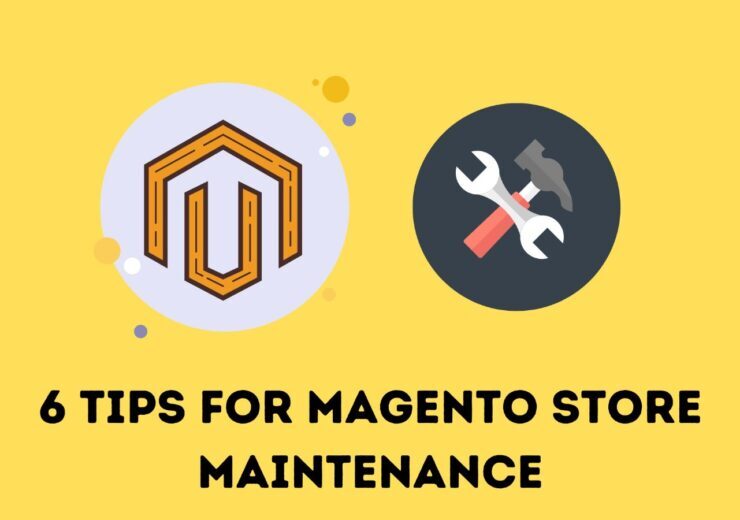12 Ways to Speed up Magento 2 Website

Fast-loading sites contribute significantly to a smooth shopping experience, positively influencing user satisfaction and conversion rates. Delays in site loading, as revealed by an Errisson report, can induce stress in users, underscoring the psychological aspect of website speed. Moreover, the speed of your ecommerce site directly affects business revenue by keeping customers engaged and minimizing bounce rates.
Google considers site speed as a ranking factor, reinforcing the importance of optimizing your Magento store for better search visibility. Slow-loading sites are more likely to experience cart abandonment, directly impacting revenue generation.
Factors Leading to Slow Loading Speed in Magento 2 Websites
- Distant hosting locations contribute to slow Magento 2 speed.
- Inadequate hardware, below 2GB memory, hampers performance.
- Unused tools and heavy designs can bog down the site.
- Inefficient data caching affects website speed.
- Large catalog sizes may lead to slower page loads.
- Unoptimized CSS, JS, and excessive JavaScript impact overall performance.
Ways to Speed Up Your Magento 2 Website
1. Varnish Caching
Implement Varnish caching, an HTTP accelerator designed to handle content-heavy dynamic sites. Varnish reduces server request processing time, saving network bandwidth and decreasing server load. Magento website development USA supports native Varnish integration for full-page caching, enhancing overall site speed.
2. Minify CSS and JS Files
Minify CSS and JS files by removing unnecessary data, such as white spaces and characters, without affecting functionality. This process reduces file sizes, leading to faster response times and improved server processing.
3. Image Optimization
Optimize images for faster loading by using WebP file format, resizing and compressing images, enabling Fastly image optimization, employing lightweight themes, and utilizing extensions specifically designed for image optimization.
4. Set Up a CDN
Configure a Content Delivery Network (CDN) to distribute content across geographically distributed servers. A CDN reduces the distance between the client’s browser and the primary server, ensuring high availability and consistent performance across different regions.
5. Choose Fastest Magento Hosting
Select a reliable and managed Magento website development USA for hosting provider to ensure optimal site performance. Shared hosting plans may result in slow performance, so opt for hosting that aligns with your scaling and speed requirements.
6. Clean Magento Logs and Database
Regularly clean Magento logs and databases to improve database performance, reduce site latency, and ensure a responsive site. Cleaning logs prevents unnecessary data buildup and optimizes overall site speed.
7. Check Third-Party Extensions
Audit third-party extensions to identify potential performance issues. Remove unnecessary or faulty extensions and ensure that plugins are sourced from credible providers to prevent functional delays.
8. Avoid JavaScript Bundling
Consider disabling JavaScript bundling if it negatively impacts Magento performance. Bundled JS files can be heavy and slow to load, affecting overall site speed.
9. Site Audit to Identify Bottlenecks
Conduct a thorough site audit to identify performance bottlenecks, including lazy page elements and loading issues. Addressing these bottlenecks enhances overall site speed and user experience.
10. Optimize Time To First Byte (TTFB)
Optimize Time To First Byte (TTFB) to analyze server response times. Strategies such as browser caching, server optimization, and reducing web page sizes contribute to improved TTFB and overall site speed.
11. Magento Updates
Regularly update Magento to the latest version to benefit from optimized security and functionality. Staying up-to-date ensures compatibility with the latest technology stack and reduces the risk of integrating extensions that may slow down your site.
12. Optimize PHP Code
Magento website development USA Optimize PHP code to reduce site weight and enhance server efficiency. Use PHP accelerators, disable unnecessary PHP modules, and employ profiling to identify and address slow-loading code.
Additional Ways for Magento 2 Speed Optimization
- Turn on production mode for fast performance.
- Optimize site speed for mobile devices.
- Follow performance best practices from Magento’s official documentation.
- Configure Redis caching in conjunction with Varnish.
- Enable gzip compression for faster page loading.
- Enable flat catalog for stores with a large number of products.
- Disable unused features and modules.
- Monitor site speed regularly through testing.
Conclusion
Magento 2 speed optimization is crucial for achieving higher search engine rankings, retaining customers, and ultimately driving business success. A fast-loading site enhances user engagement, conversion rates, and overall satisfaction. While the strategies mentioned require technical expertise and regular maintenance, investing in Magento-level experts ensures ongoing optimization and a consistently fast site. Magento website development USA at its peak performance to provide a superior shopping experience for your customers.





